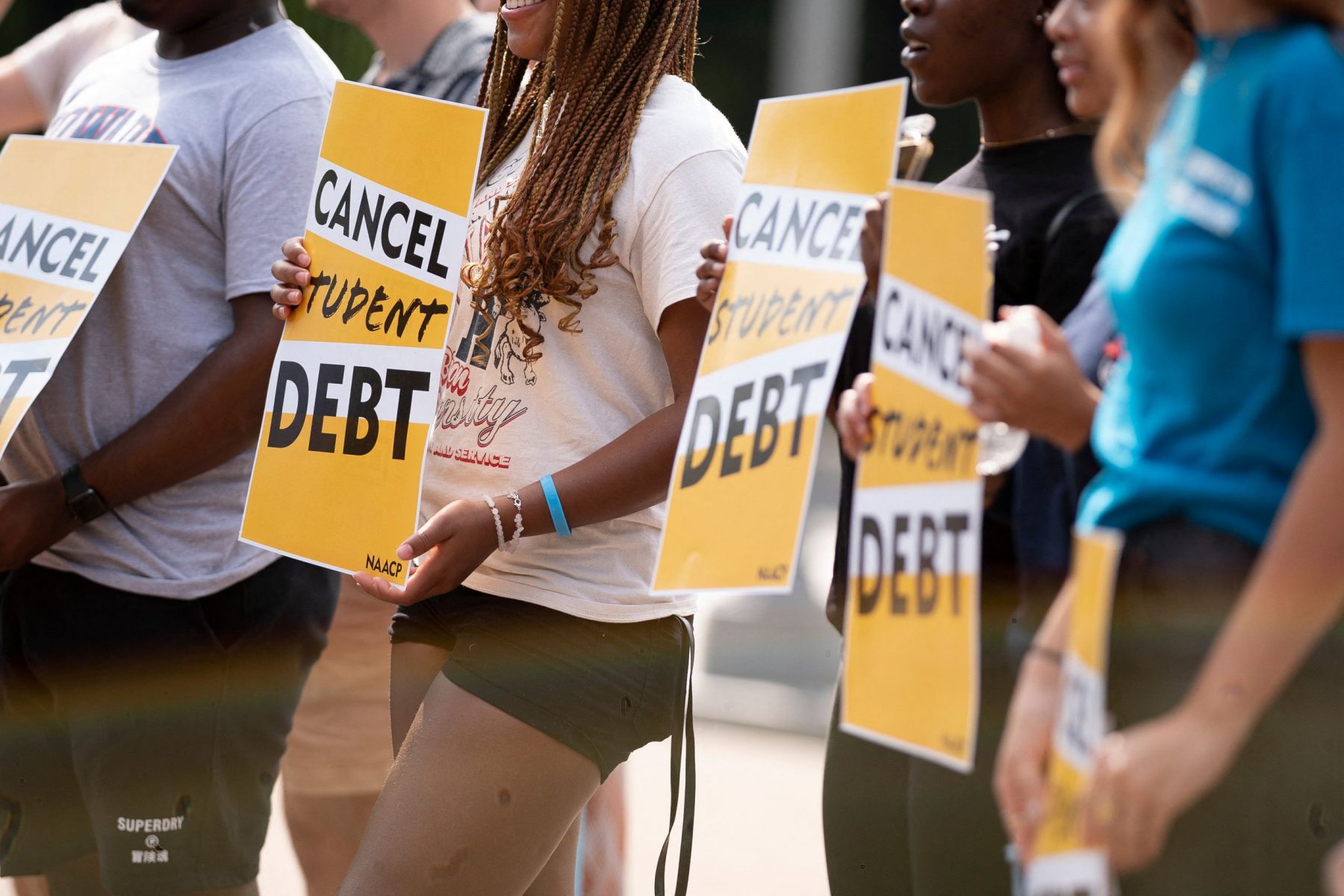
Fulfilling a long-standing campaign promise, President Joe Biden has pledged to cancel $10,000 in student loan debt — or $20,000 for Pell Grant recipients — for individuals earning less than $125,000 a year, or $250,000 for married couples. According to the U.S. Department of Labor, the plan would see the debt burden of 1 in 3 borrowers — or 1 in 4 Black borrowers, according to the nonprofit Education Trust — fully eliminated.
Yet many say a one-time loan cancellation doesn’t address escalating tuition costs and a gaping racial wealth divide that has sent millions of Americans into crushing debt. The Institute for College Access & Success reports that the average college graduate leaves school with nearly $30,000 in debt; Black women, who borrow more than any other group, graduate with debts of about $40,000, according to the American Association of University Women. The problem is particularly pronounced in journalism, an industry plagued by nepotism and pay disparities, where master’s degrees can cost $100,000 and entry-level salaries rarely top $40,000.
We asked four journalists of color who took out tens of thousands of dollars in student loans to share their thoughts on the new federal program, the difficult financial choices they’ve had to make to keep up with payments and the opportunities this long-awaited relief can afford them. Their interviews have been edited and condensed for clarity.
Carrington Tatum, 24, environmental justice reporter at MLK50, Texas State University alum:
If you talk about the student loan crisis, $10,000 is a bucket of water on a house fire. It’s better than no water, but it doesn’t put out the fire. We need to be talking about full cancellation. I graduated in 2020 with $90,000 in student loans, and I’m not expected to pay it all off until I’m about 42. I quit journalism in June after my rent rose by $300, which forced me to come to terms with the fact that I can’t afford to do the reporting I want to do.
I’m also in a situation where most of my debt is held by private lenders who have shown no grace. There’s never been a pause on payment for private loans — for me that’s the bigger strain and a piece that gets missed in the broader conversation on student debt. I also think about equity in this: Black and brown students from low-income backgrounds take on a lot more debt to go to school. There’s a pay disparity especially for Black women. We take on more debt and make less, so the burden is heavier. Biden’s plan doesn’t address that.
Bria Overs, 25, special projects editor at Business Insider, California State University Dominguez Hills alum:
Under Biden’s plan, 1 in 4 Black students will have their debt wiped. I’m the 1 in 4. I graduated in 2018 and finished with about $12,800 in debt. While I know that’s not a lot to some people, it’s a lot to me. Throughout college I had a full load of classes and was working two jobs at one point. I pretty much used only grants, loans and scholarships to go to school. Not having this $13,000 looming over me is honestly a huge weight off my shoulders. Now, I don’t have to wait until I’m almost 40 to buy a car and a house and build generational wealth. That’s something my parents and grandparents couldn’t do. My mom was making under $40,000 a year when I became the first person in my family to go off to college.
I’m grateful, but more work needs to be done. There are huge pay issues in the journalism industry that need to be addressed. It’s not fair that you can get the same education as someone else and still be paid less. There should be another conversation about how colleges just keep raising prices year after year. I had the debt that I had because it was less expensive when I went to school. In a way, we’re being punished for pursuing an education.
Victoria Walker, 29, former senior travel reporter at The Points Guy, Howard University alum:
I studied broadcast journalism and took out about $34,000 in student loans. With the $20,000 forgiveness plan for Pell Grant recipients, I can probably pay off the balance now. But without it, I would just continue not to pay them. I’ve been deferring my loans because I wanted to be more intentional about saving for other things, like a house.
Personally, I have no real complaints about Biden’s plan. But in the grand scheme of things, it’s a drop in the ocean. Eighteen-year-old kids are starting off with $30,000 in debt — that’s more than what somebody makes in a year. You have well-meaning people saying that student loan debt is good debt; it’s not medical debt or credit card debt. But I don’t understand how any debt can be good.
Aisha Sultan, 48, home and family editor and columnist at St. Louis Post-Dispatch, University of Chicago alum:
I think the plan is a great start. I really appreciate that it took people who are working class, middle class or come from economically disadvantaged backgrounds. These are students who are being asked to take on a great burden, going to school at a greater cost than ever before in American history.
As a Pell Grant recipient, I had about $20,000 of student loan debt after undergraduate school plus $30,000 after grad school. As a young journalist at a local newsroom, I took at least 10 years to pay everything off. It took much longer to save up on other things. I was married and had a spouse to supplement my income. I had both of my children young. We didn’t have paid maternity leave at the time. I had to save up my paid sick days and take the rest as unpaid leave, all the while I was saving money for living expenses and for my loan payments. However hard those years might have been, I’m now happy that students today will get a little bit of relief.


